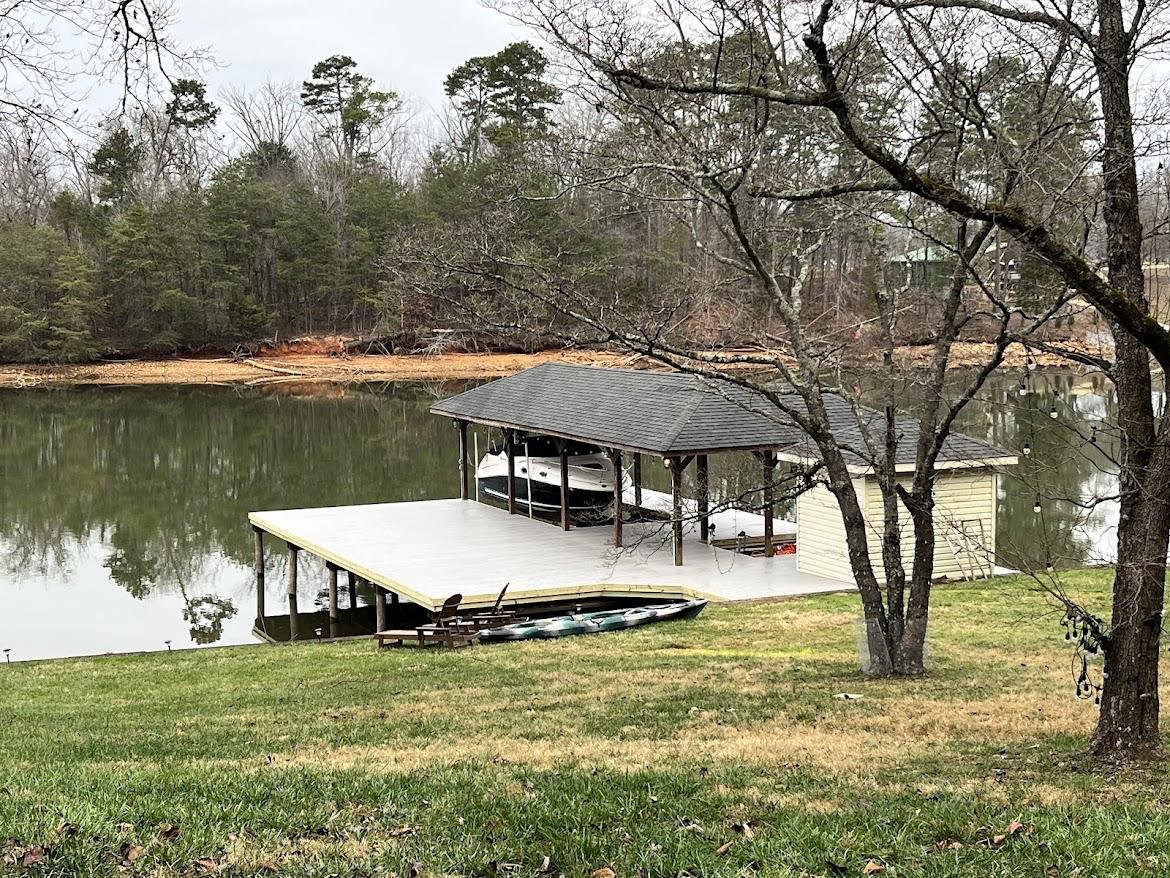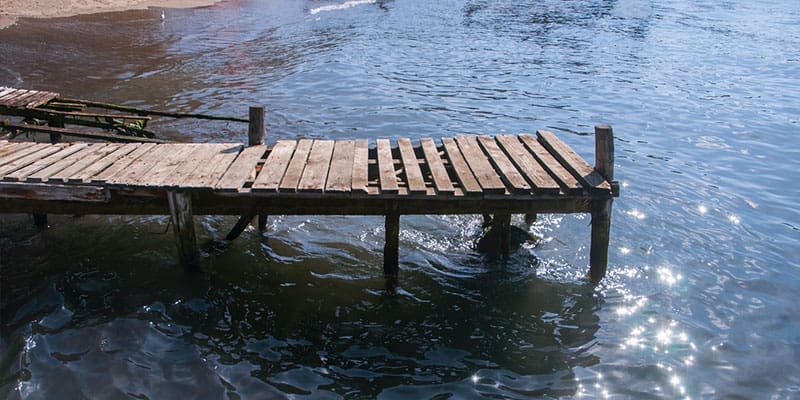Crucial Overview to Budget Friendly Dock Repairs for Homeowners
Crucial Overview to Budget Friendly Dock Repairs for Homeowners
Blog Article
Efficient Dock Repair Techniques: Ensuring Structural Honesty
Making sure the structural stability of docks with reliable repair techniques is critical for the long life and safety and security of aquatic facilities. Consequently, picking the best repair materials, such as composite products and corrosion-resistant alloys, is essential for resilience.
Analyzing Dock Damages
Analyzing dock damages is an important primary step in guaranteeing the structural honesty and safety and security of any kind of docking facility. This preliminary analysis entails a comprehensive assessment to identify both noticeable and hidden damages. Key elements to examine consist of the dock's foundation, pilings, outdoor decking, and hardware. Each component needs to be scrutinized for indications of wear, rot, corrosion, or various other forms of deterioration that can endanger the structural honesty.
Structural engineers or qualified examiners normally execute these evaluations using specialized strategies and devices. As an example, underwater inspections could use finder equipment or remotely ran cars (ROVs) to discover submerged damages. Above water, aesthetic assessments are enhanced by making use of moisture meters and various other analysis tools to uncover underlying issues not immediately visible to the nude eye.

Finding Repair Materials
Selecting the proper repair work materials is an essential action in the dock reconstruction process, one that straight affects the durability and performance of the fixed structure. Material option should be driven by elements such as environmental problems, load-bearing demands, and compatibility with existing dock components.
Along with timber, composite products are progressively prominent due to their resilience and low upkeep demands. Compounds, usually made from a blend of plastic and wood fibers, supply superb resistance to rot, insects, and UV damage. For metal docks, selecting corrosion-resistant alloys such as galvanized steel or marine-grade light weight aluminum is vital to stop corrosion and guarantee structural stability in saline water problems.
Epoxy materials and marine-grade sealants are important for fixing fractures and sealing joints, supplying a water resistant barrier and boosting the dock's overall stamina. By meticulously picking top notch products, dock fixings can accomplish lasting results, thereby protecting versus future degradation and making sure safe, trusted usage.
Structural Support Techniques
Efficient structural reinforcement techniques are critical in making sure the stability and long life of dock repair work. One basic method includes making use of steel or composite support bars (rebar) within concrete frameworks. Rebar provides added tensile toughness, stopping splits and dispersing loads a lot more equally. This approach is especially effective for anchors revealed to hefty loads or severe environmental problems.
Another important technique is the application of fiber-reinforced polymers (FRP) These materials offer high strength-to-weight proportions and superb resistance to rust, making them optimal for reinforcing concrete or wood docks. FRP can be used in strips or sheets and adhered with epoxy materials to enhance structural integrity.
Bracing and securing systems additionally play an important role in architectural reinforcement. Cross-bracing, using steel or wood light beams, can counteract side forces, decreasing swaying and movement. Anchoring systems, such as helical piers or driven piles, supply a stable foundation by moving loads to deeper, more secure soil layers.
Lastly, the integration of load-distribution plates can aid disperse weight more evenly across the dock's surface, mitigating localized anxiety points. These strategies jointly guarantee that anchors stay safe and durable, with the ability of holding up against the rigors of their functional setting.
Advanced Repair Service Methods

One more advanced strategy includes underwater welding, which permits for repairs to be carried out without the need to dewater the area. This approach is specifically beneficial for addressing architectural issues in submerged dock parts, making certain minimal disruption to operations. Improved welding strategies, coupled with robotic systems, provide accuracy and dependability, thus extending the lifespan of the dock.
Furthermore, cathodic security systems are carried out to stop deterioration in metallic dock structures. By making use of sacrificial anodes or amazed present systems, these techniques properly minimize the electrochemical processes that lead to material degeneration.
Lastly, advanced surveillance technologies, such as architectural health tracking (SHM) systems, give real-time information on the problem of dock structures. These systems allow aggressive maintenance and timely treatments, inevitably making certain the long-lasting structural honesty of the dock.
Upkeep and Avoidance
Maintenance and avoidance are essential concepts that underpin the durability and safety of dock frameworks. Routine evaluations are critical, allowing for very early discovery of wear and tear, possible weaknesses, and environmental impacts. A proactive approach, entailing routine checks for corrosion, rot, and architectural shifts, minimizes pricey fixings and extends the dock's operational life.
Precautionary measures need to consist of using protective finishings to metal parts to defend against corrosion and making use of treated wood to withstand decay. Additionally, guaranteeing correct drainage and ventilation can avoid water buildup, which is a common source of structural destruction. Including high quality materials and adhering to producer standards during construction and repair phases also play crucial roles in boosting longevity.

Training employees in dock upkeep finest techniques ensures constant application of preventative my response measures. Leveraging technical breakthroughs, such as drones for examinations and sensing units for real-time monitoring, can additionally improve maintenance efforts. By prioritizing maintenance and avoidance, dock owners can guarantee structural integrity, functional security, and cost-efficient administration over the dock's life-span.
Final Thought
To conclude, keeping the structural integrity of aquatic centers requires extensive dock repair service techniques. Detailed assessments using advanced tools uncover both visible and concealed problems, while the selection of ideal repair work materials improves resilience. Applying structural support approaches addresses blog tension factors effectively. Advanced repair service strategies, coupled with routine upkeep practices, guarantee the dock continues to be secure and operational under varied environmental conditions. Embracing these approaches considerably extends the life-span and functionality of marine facilities.
Guaranteeing the structural integrity of docks with efficient repair service methods is extremely important for the long life and safety of aquatic facilities.Selecting the suitable repair work materials is a critical step in the dock remediation process, one that directly influences the long life and efficiency of the fixed framework.Efficient structural reinforcement techniques are crucial in guaranteeing the security and longevity of dock fixings. By focusing on maintenance and avoidance, dock owners can make sure architectural honesty, functional security, and affordable management over the dock's life-span.
In verdict, preserving the structural honesty of aquatic facilities demands thorough dock repair service strategies.
Report this page